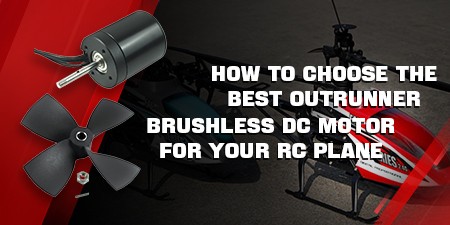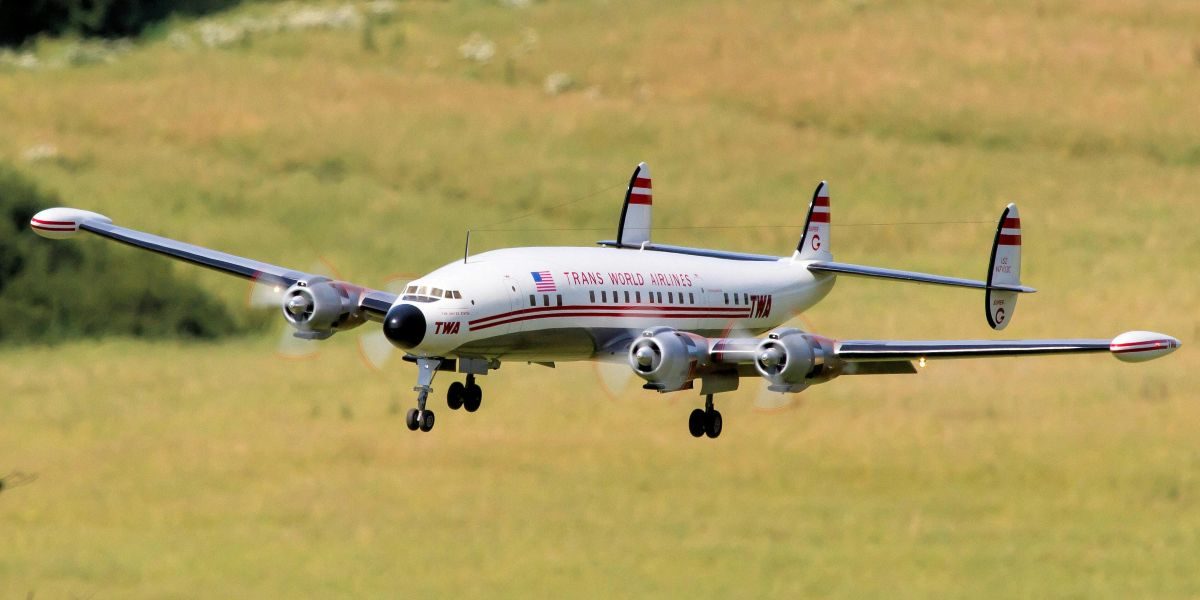Did you know an outrunner brushless DC motor is often a popular choice for RC planes? There’s a good reason for this—these motors are known for high power, efficiency, and smooth operation. Unlike brushed motors, they eliminate friction and wear caused by brushes, which can lead to a longer lifespan and better performance.
Moreover, outrunner brushless DC motors typically have a spinning outer shell that can help generate more torque at lower RPMs. These characteristics make them well-suited for propeller-driven RC aircraft. They come in various sizes, KV ratings, and power outputs, so choosing the right motor can contribute to better performance and longer flight times.
That’s why we’re sharing key factors to consider when selecting an outrunner brushless DC motor for the RC plane. By following these tips, you can make a more informed decision.
Consider Power Packs
Choosing the right outrunner brushless DC motor can be overwhelming, especially if you’re new to the RC hobby. One practical option is to look for a complete power pack. These pre-configured sets include essential electronics for your airplane (excluding the receiver and battery).
Additionally, they’re designed to match specific models, helping ensure your RC plane achieves strong performance. You can explore various power packs in the market. For example, Power Pack A is commonly recommended for Mighty Mini airplanes, while Power Pack B works well for lightweight models. Power Pack C may be a better fit for larger airplanes requiring more power, and Power Pack F is often preferred for powerful mini aircraft.
Size of Motor
Another important factor is the motor’s size. Typically, outrunner brushless DC motor sizes are shown as numbers like 22-05. The first number (e.g., 22) represents the motor’s width, while the second number (e.g., 05) indicates its height.
These measurements are usually printed on the motor casing. Generally, wider motors tend to generate more torque due to greater leverage. Selecting the right size can help achieve a good balance of power and efficiency for your RC plane.
Speed of Outrunner Brushless DC Motor

The speed of an outrunner brushless DC motor plays a key role in determining how fast your RC plane can fly. To compare speeds, you can check the KV rating. KV stands for revolutions per volt, indicating how many times the motor spins per volt under no load.
In general, a higher KV rating means a faster-spinning motor. For example, a 1200KV motor rotates 1,200 revolutions per volt. Selecting the right KV rating helps ensure your plane performs as desired.
Thrust
The amount of thrust a motor generates largely depends on the propeller and battery combination. Many manufacturers provide thrust data to help you choose the right sensorless outrunner brushless motor for your RC plane. A well-matched motor can support optimal performance and flight stability.
If you want your plane to climb vertically, the thrust should ideally exceed its weight. For example, a motor producing more than 2 lbs of thrust is recommended for a 2 lb model. This helps ensure sufficient power for smooth takeoff and sustained flight. Choosing the right thrust-to-weight ratio can enhance your RC flying experience significantly.
Power of Motor
The power of sensorless outrunner brushless motors is measured in watts (calculated as voltage × amps). Generally, higher wattage correlates with greater motor power. Understanding this can help match the right components for your RC plane.
Another key factor is the current draw (amps), which is important when selecting an Electronic Speed Controller (ESC). An ESC with sufficient capacity helps ensure smooth and safe operation. A common recommendation is to choose an ESC at least 20% larger than the motor’s amp draw. For example, a 30A ESC is often a safe choice for a motor pulling 20A.
Using an undersized ESC could lead to overheating or failure, potentially damaging your RC plane’s electronics. Conversely, an ESC with a higher rating offers extra protection and efficiency, reducing strain on the system.
Compatibility between the battery, ESC, and motor is also crucial. Mismatched components might reduce performance or cause damage. Selecting the right power setup can improve thrust, efficiency, and flight time. Understanding motor power and its relationship with other components can lead to a smoother RC flying experience.
Efficiency and Heat Management:
Finally, efficiency should be considered when choosing an outrunner brushless DC motor. A more efficient motor tends to convert more electrical power into thrust while generating less heat, which can improve flight performance and extend battery life. To gauge efficiency, you might check the motor’s wattage rating and overall design. High-quality bearings, proper ventilation, and low internal resistance often contribute to better efficiency. For further details, you can visit www.Brushless.com or consult a technician.
Heat management is also important, as overheating may reduce performance or cause damage. Look for motors with built-in cooling features, such as vented casings or heat-dissipating materials. Proper airflow and a correctly sized ESC can also help prevent overheating.
Choosing an efficient motor supports smoother operation with less energy loss, potentially resulting in longer flight times and better responsiveness.
Do you have additional tips for selecting an outrunner brushless DC motor? Share your thoughts with us!
Published by Joseph T.

















